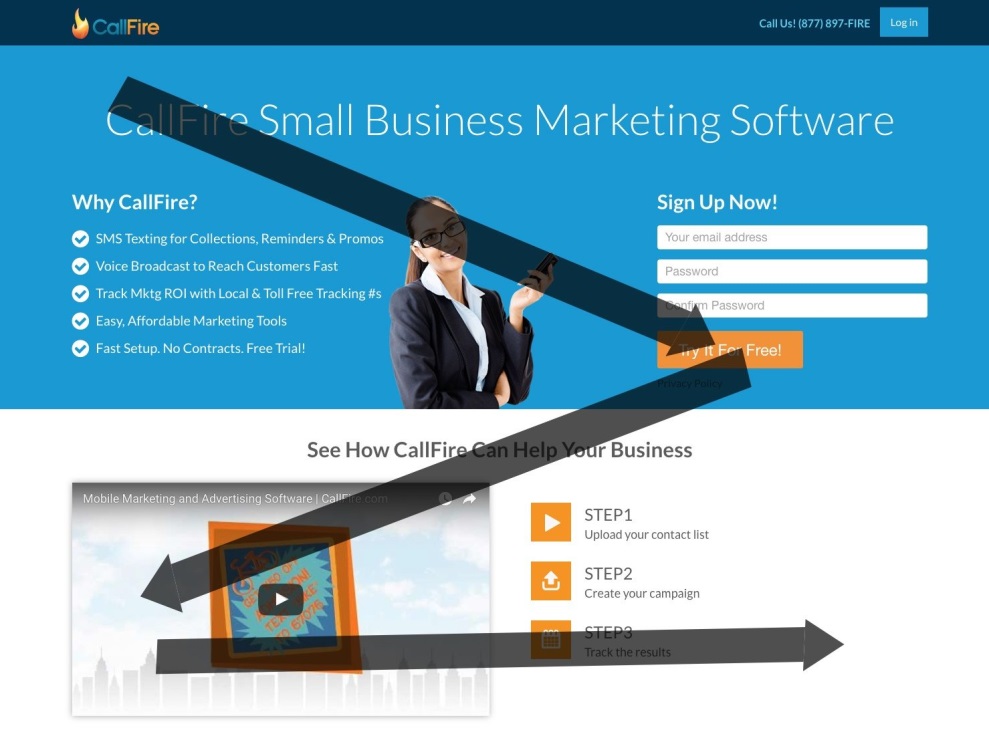The Feng Shui of Modern Email
If you’ve ever felt like your life is becoming cluttered and overwhelming, you may have tried the popular KonMari method of cleaning and organizing as a way to restore order. Or, you might turn to the ancient practice of feng shui, defined as:
“A system of laws considered to govern spatial arrangement and orientation in relation to the flow of energy (qi), and whose favorable or unfavorable effects are taken into account when siting and designing buildings.” Oxford English Dictionary
In other words, feng shui is a way of arranging and maintaining your furniture and belongings to balance energies while simplifying your life and making it more productive.

Before you scoff at the notion that having a houseplant in your office is going to improve your daily productivity, consider feng shui’s four main concepts, implores Jen Capstraw, director of strategic insights and evangelism for Iterable:
- Clear the clutter
- Introduce quality air and light
- Enhance your wealth area
- Know and apply your “kua” (“pronounced “qwah”) number
Hard to argue with these general guideposts for better living, no? (I’ll explain kua numbers further down!)
Capstraw applies these four feng shui concepts to the practice of email marketing. In her recent talk at Digital Summit Tampa, she broke down each guidepost into the ways it can improve your email marketing strategy. Let’s start with No. 1:
1. Clear the clutter.
No one likes receiving an email full of text. Who has time to read the fine print? Simplify your headers and pre-headers (the text that appears above your header graphic or headline, such as “View this email in your browser”) so that recipients can get to your main message faster. Think about eliminating the header entirely. Or, at least shorten it so mobile readers can get to the gist more quickly. Mobile readers account for 46 percent of all email readers, so catering to this audience is a wise idea.
Use concise copy in the main part of your emails. One way to cut down on the amount of words you write is to use active voice: assign a subject to all verbs, so that instead of saying, “The email was written,” you’re saying “I wrote this email.” Still unsure of when you’re using active vs. passive voice? Apply the Zombie Test: If you can add the words “by zombies” after any verb in your sentence and it makes sense, you’re using passive voice.
Finally, use responsive design to ensure all elements of your emails will work together harmoniously no matter what size screen recipients view your emails. Responsive design means your text, images, and other elements automatically resize in proportion to each other based on the parameters of the screen. It helps ensure that small screens don’t cut off large images and big screens don’t shrink font sizes.
2. Introduce quality air and light.
Feng shui advocates letting air and energy flow freely through a room. Apply this concept to your emails by arranging each element in a streamlined way that follows the reader’s natural viewing path – usually a straight top-to-bottom flow or a Z pattern:

Using responsive design helps create and maintain breathing space around your email’s elements. Be sure to add plenty of white space between elements and to use appropriate graphics that illuminate the copy.
3. Enhance your wealth area.
In your home, your wealth corner is to the southeast. Enhancing your wealth corner means paying careful attention to which objects are placed in this area of your home and how you enhance the energy flow there.
In your emails, enhancing your wealth corner means using clean, bold calls-to-actions so your recipients are led to do exactly what you hope they’ll do after reading your email. Try writing your CTA first, before you write any other email copy. Then let your CTA guide the rest of your email content.
Use just one call-to-action. Otherwise, your email becomes too confusing or distracting – readers won’t automatically know where to start, or which CTA is more important to act on if there is more than one. Sometimes, Capstraw noted, a secondary CTA is appropriate is there’s another action recipients can take as a step towards your primary CTA. For example, if you want to recruit new members but
To ensure your CTAs are clear and helpful, be specific. Calls to “learn more” or “Click here” are okay, but not as urgent or descriptive as “Register for our webinar” or “Start your trial membership.” With those last two CTAs, readers know exactly what they’re doing if they click on the button or linked text.
If you like using buttons to highlight your calls-to-action, use bulletproof buttons. These are HTML-based buttons that show even when an email filter blocks images. Create your own bulletproof buttons with this online generator.
4. Identify your kua (“qwah”) number.
Kua numbers are also called “life area” numbers. They provide custom guidance to feng shui practitioners in decision-making. In other words, kua numbers customize the practice of feng shui. Email marketers can apply that concept by thinking about how they should customize their emails based on audience needs and demographics. People open emails with personalized subject lines 26 percent more often than non-personalized subject lines, and marketers enjoy an average sales increase of 20 percent when personalizing the contents of an email. So there is a conversion incentive to invest time and effort into making your emails speak more directly to the person receiving them.
You can personalize subject lines, greetings, and body copy through simple field merges. If your association uses marketing automation software or an AMS, you can easily personalize emails by sending content that is applicable to certain member subgroups as designated in your membership database, such as new members, student members, or past conference attendees.
You can also personalize your communication by device: Ask your members, via email, if they would be okay with your association contacting them by phone, text or specific email address. Then lead them to a landing page with a short form that already has the fields you know about them filled out. Let them update their info if needed, and make it easy for them to specify how they would like to be contacted going forward.
Feng shui may be an ancient practice, but its durability continues to manifest itself in modern ways such as email marketing. The next time your marketing staff feels like an email campaign is stuck, try out these four guiding principles with your email marketing and watch your recipients’ energy flows improve in response.


